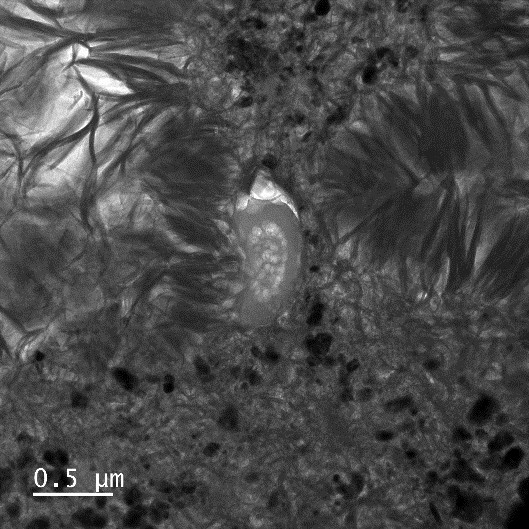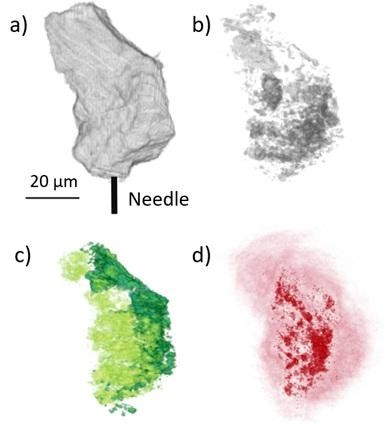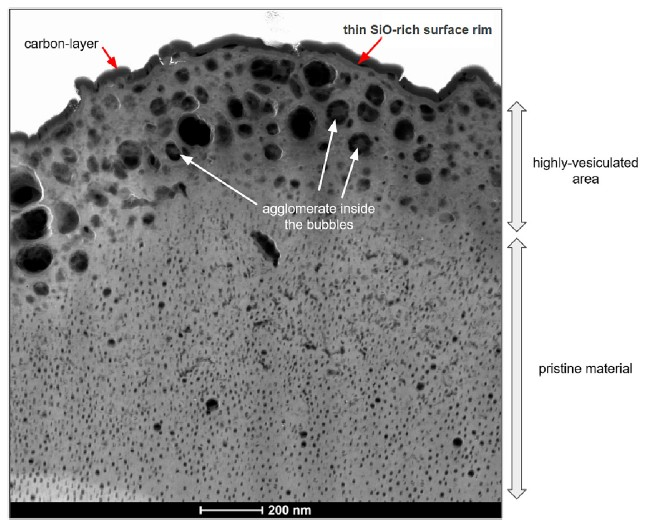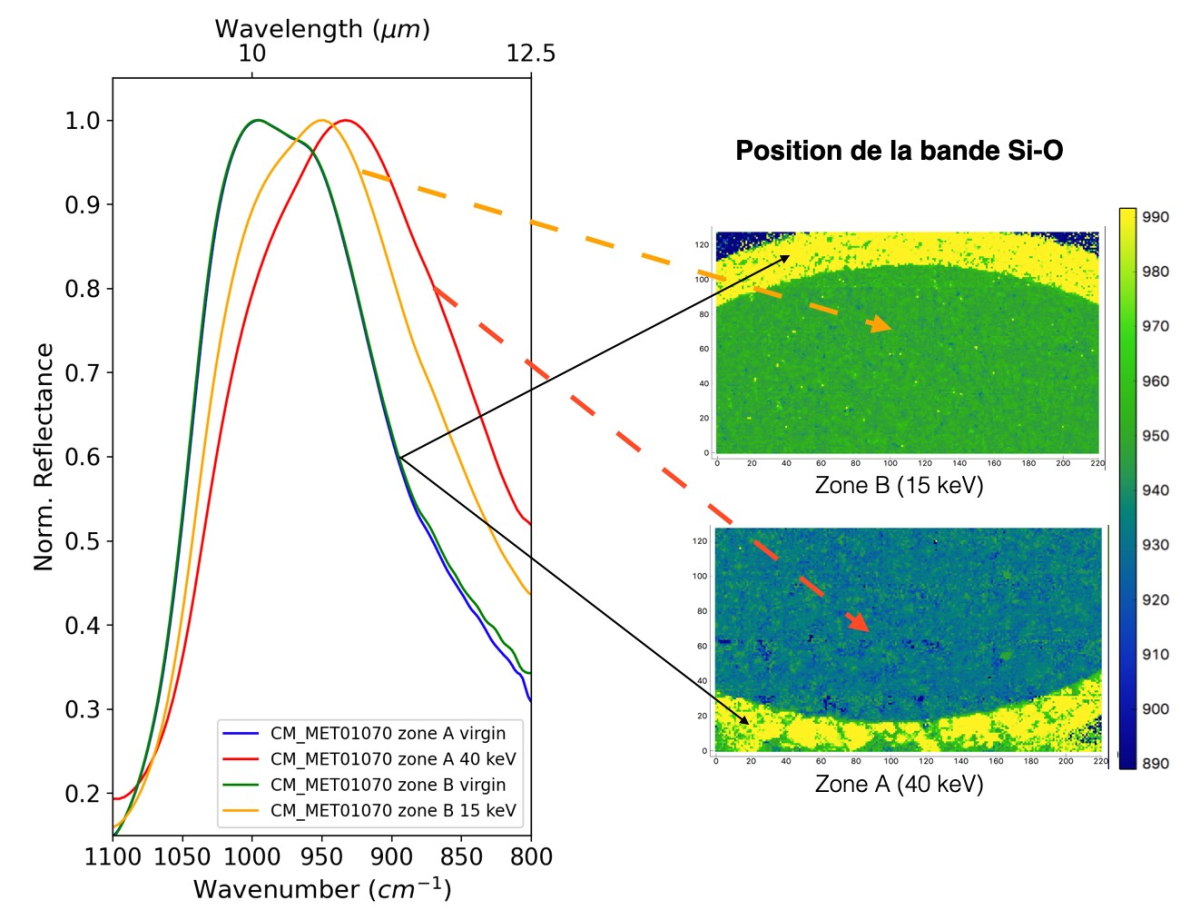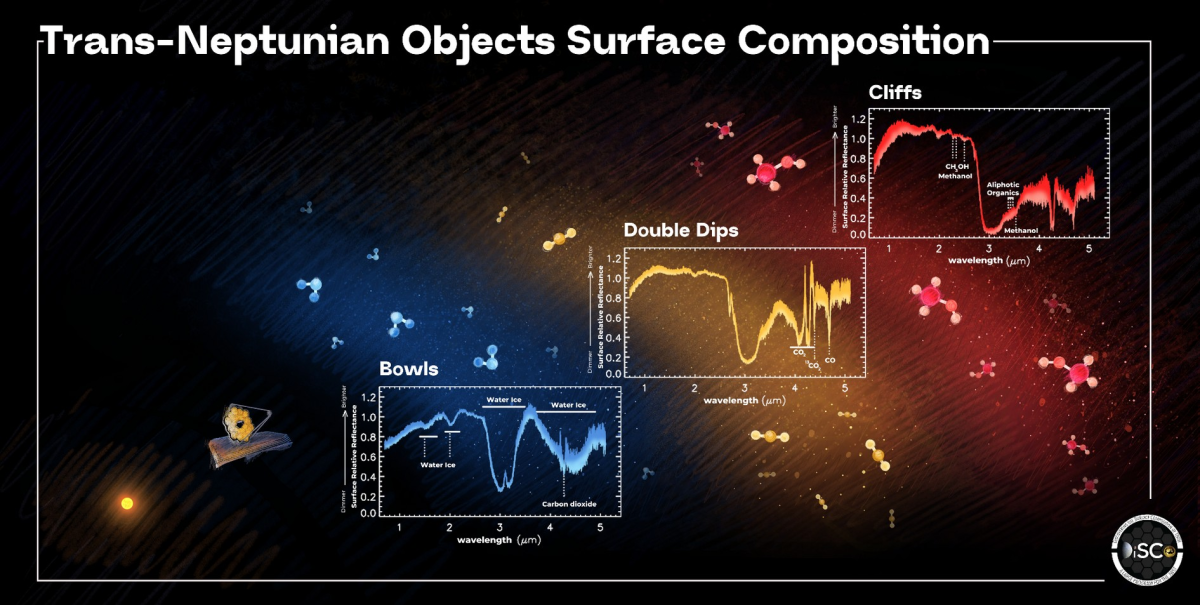Scientific Themes
The scientific objectives of the A&O team are aligned with Solar System exploration missions and astronomical observation instruments. The team members, with different backgrounds (astrophysics, physics, chemistry and geology), use a variety of analytical methods, allowing an in-depth study of extraterrestrial solids. The analysis of various extraterrestrial samples and the use of synthetic analogues in the laboratory, coupled with in-situ observations (Rosetta, Hayabusa2, OSIRIS-Rex missions) make it possible to constrain the filiation links between interstellar, cometary/asteroid and interplanetary matter.
Primitive cosmo-materials analyses
Primitive bodies, which have little or not at all evolved since the formation of our Solar System, nearly 4.6 billion years ago, from which the cosmo-materials available in the laboratory are derived, present a complex assembly and significant physico-chemical heterogeneities down to the micrometric and nanometric scales. Historically, the team was involved and invested in the analysis of primitive extraterrestrial samples such as the IDPs (Interplanetary Dust Particles) and meteorite samples. It particularly used infrared microspectroscopy (the only observable that can be directly linked to data measured from Earth ground telescopes, by space telescopes, and by space probes) and Raman (for the study of the aromatic organic component). The A&O team participated in the preliminary analysis groups of the cometary samples brought back in 2006 by the NASA's "Stardust" space mission and was selected in 2018 to participate in the preliminary analyses of asteroid samples brought back at the end of 2020 by JAXA's "Hayabusa 2" space mission.
In the past few years, the A&O team has developed various analytical protocols specifically optimized for these precious, fragile and rare materials in an analytical chain ranging from the least destructive to the most destructive techniques in order to get the best information from analyses at different scales. The favored analytical technique is infrared spectroscopy (micro-spectroscopy, hyperspectral imaging and tomography) which is completely non-destructive. To complement the physico-chemical information provided by infrared and Raman measurements, a range of different techniques has been added. These include, the transmission electron microscopy (TEM) and scanning electron microscopy (SEM), XRF fluorescence on synchrotron (NANOSCOPIUM beamline, SOLEIL), X-ray tomography (PSICHÉ and ANATOMIX beamlines, SOLEIL) and secondary ion mass spectrometry coupled with time of flight (TOF-SIMS, PLACAMAT platform (Bordeaux), and Andromède (IJCLab) and LAEC (Lebanon) collaborations).
All these techniques allow the A&O team to study both the physical (porosity, mineral assembly, fracturing) and chemical (composition of mineral and organic phases and their co-localizations) properties of the samples analyzed in order to better constrain the pre- and post-accretional processes undergone on their parent bodies.
Transmission electron microscopy offers a fascinating view of the nanoscopic intricacies of extraterrestrial matter, revealing the complex history of asteroids. Here, a grain from the carbonaceous asteroid Ryugu, collected by the Hayabusa2 mission, reveals a nodule of organic matter surrounded by coarse-grained phyllosilicates and a fine-grained clay matrix rich in sulfide crystals.
3D distributions of different components on a grain of the asteroid Ryugu analyzed in X-ray and IR tomography: (a) All the material, (b) View of its porosity, (c) different types of minerals and (d) distribution of aliphatic organic CH
Irradiation experiments on extraterrestrial materials and their analogues
A significant part of the A&O team's work focuses on the study of the ion irradiation effects on different types of solid surfaces. This activity covers: 1/ the study of the physico-chemical evolution of irradiated ice mixtures and the formation of complex molecular and macromolecular organic matter; and 2/ the study of the evolution and alteration of planetary surfaces (including asteroids, trans-Neptunians) under the effect of irradiation by the solar wind and cosmic radiation. For this, the team has developed the INGMAR device (IrradiatioN de Glaces et de Météorites Analysées en Réflectance) in collaboration with the IJCLab.
INGMAR consists of a vacuum chamber connected to the SIDONIE ion implanter (IJCLab) and to visible and infrared spectroscopy lines allowing in-situ monitoring of the evolution of the spectra of the samples during their irradiation. Depending on the thickness of the prepared samples, the measurement can be performed either in transmission (0.4-25 µm) or in reflection (0.4-5 µm) mode. A cryostat allows the temperature of the samples to vary from 12 to 300K. A gas mixing line is connected to the vacuum chamber and allows different ice mixtures to be deposited on the cold finger of the cryostat. Different ions are available, their energies and fluences can be chosen according to the astrophysical process to be simulated/studied.
High-resolution electron microscopy image of an Ar+-irradiated serpentine. A highly vesiculated region is located above the pristine (unirradiated) region. The upper layer consists of a thin, SiO-rich rim.
Left: Mid-IR spectra obtained on a pellet of the meteorite CM MET01070 before (blue and green) and after (orange and red) irradiation with He+ ions at different energies. Right: Images of the position of the main peak around 10 µm (shown on the left) where we see clear differences between the two irradiation energies (in the center of the pellet on both right panels) and the edge of the pellet that was hidden during irradiation. The higher the irradiation, the more the spectrum is modified. This is a new marker of space alteration highlighted in the team that we use on observations of small bodies.
Solar System small bodies observations
The team's expertise in the analysis of extraterrestrial matter, particularly by mass spectrometry, was used to characterize cometary dust collected and then measured in TOF-SIMS by the onboard COSIMA instrument (and its COSISCOPE microscope (manager: Y. Langevin, IAS)). These analyses revealed the particularly high carbon content of the dust from comet 67P/Churyumov-Gerasimenko and the work on this exceptional amount of spectrometric data continues in order to refine our knowledge of the chemical composition and physical structure of this primitive matter.
Furthermore, with its laboratory expertise in IR spectroscopy, the team is solicitated by space projects to participate in the analysis of space mission data (remote observations). This was particularly the case for the Hayabusa-2/JAXA and OSIRIS-REx/NASA sample return missions where the team was involved in the analyses of the NIRS3 (Near Infrared Spectrometer), OVIRS (OSIRIS-REx Visible and Infrared Spectrometer) and OTES (OSIRIS-REx Thermal Emission Spectrometer) instruments for the search for spectroscopic clues related to space alteration (change in spectral slope, band shifts, etc..).
In addition, the team explores the outer objects of the Solar System using the James Webb Space Telescope (JWST), which opens a new window on trans-Neptunian objects, these icy bodies that bear witness to planetary formation. We are co-investigators on several major projects, including a large international program (DiSCo), to observe and analyze these distant objects with the NIRSpec instrument. Our unique laboratory expertise allows us to identify the molecules present on their surfaces and decipher their spectra in order to reconstruct their composition and history. Our work has revealed three major families of trans-Neptunian objects, with distinct chemical compositions, shedding new light on the formation of the Solar System. These results also serve as a reference for the study of other icy bodies, such as Centaurs or Neptune Trojans. The team leads the analysis of spectra and the development of scenarios on the origin and evolution of these objects, and regularly welcomes students at the interface between space observations and laboratory experiments.
Artistic representation of the distribution of trans-Neptunian objects in the planetesimal disk, with overlaid representative spectra of each compositional group highlighting the dominant molecules on their surfaces. Credit: Graphic art by William D. González Sierra for the Florida Space Institute, University of Central Florida



